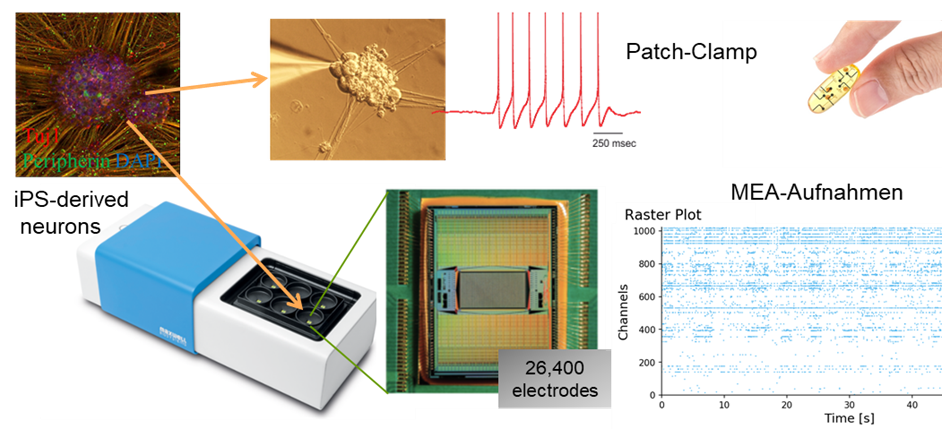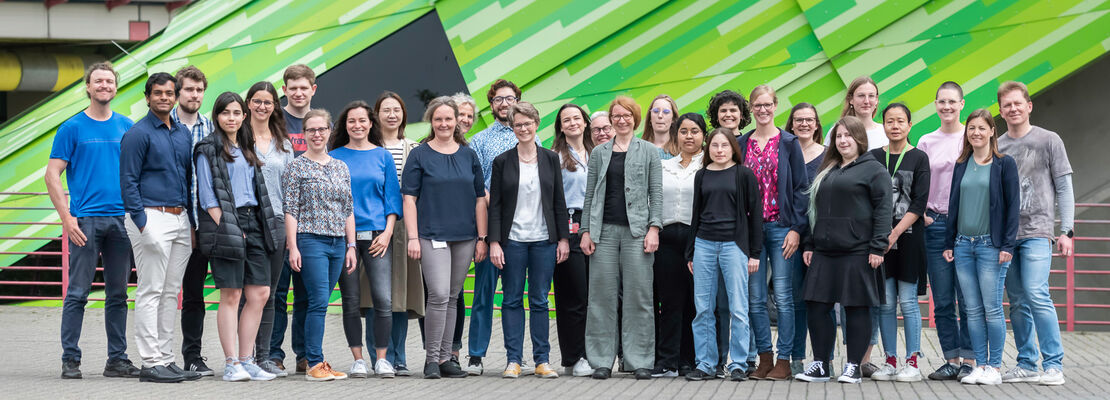Pain research currently suffers from a translation problem: pathomechanisms or therapies of mice are often ineffective in humans. In psychiatry, reliable preclinical models are rare. Therefore, a human cellular system is needed. We work with induced pluripotent stem cells (iPS cells) from patients and subjects and thus generate sensory peripheral neurons and central nerve cells. Using electrophysiological methods, we investigate the excitability – and thus the relevant function – of these cells and can thus read the consequences of genetics, pharmacology and other manipulations directly in the functional pathophysiology of the cells. We are particularly interested in peripheral and neuropathic pain syndromes, but also schizophrenia and autism.
You can find out more about our stem cell research in this video of the Stem Cell Network NRW:
In collaboration with Prof. Laura De Laporte from the DWI (Leibniz Institute for Interactive Materials), we are working within the Research Training Group ME3T on a 3D innervated skin model based on hydrogels in order to investigate the altered keratinocyte-nerve interaction and neuronal excitability, e.g. in inflammation or genetic diseases.
In order to use cell models as close as possible to humans, we also use sensory neurons of the pig, which we characterize in detail electrophysiologically and genetically.









